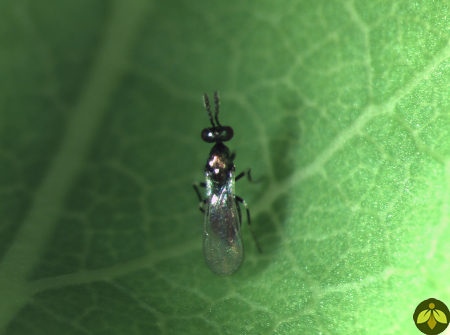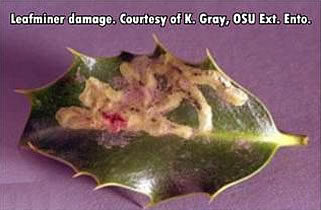Description

Diglyphus isaea are warm-weather leafminer parasites to control leafminers. These 2mm mini-wasps are best used for preventing the establishment of several leafminer species such as Liriomyza.sp. and the Chrysanthemum Leafminer Chromatomyia (=Phytomyza) syngenesiae. They can also tackle minor infestations. And, if established, they can adequately protect a crop throughout the season.
Diglyphus isaea, which are shipped as pre-hatched, pre-fed adults, are the product of choice when leafminers are first seen, or soon expected to be seen, in a warmer area. They do best in warmer conditions.
Life-style
Diglyphus isaea work by “stinging” (oviposition) the larvae of leafminers while they work in their mesophyll mines with their ovipositors (egg-laying apparati). The stinging conveys a paralyzing toxin to the pests. The toxin works right away — the larvae stop feeding. But these mini-wasps don’t stop there. They will also feed on the hosts (host-feeding), as do many Chalcid (KAL-cid) wasps (a wasp family). They will then lay 1-5 eggs next to the paralyzed larvae — up to 50 eggs in their life. The wasps’ larvae which hatch from the eggs, then consume the leafminer larvae from the outside-in (ectoparasitism). The parasites’ larvae then construct pillars of fecal matter around the remains of the much deteriorated pests. These are thought to protect the beneficial larvae from leaf drying, etc., while they undergo pupation.
 The life-span of these parasites is roughly 2 weeks in their immature stages, then 3 weeks as adults. The conditions for optimum performance will be between 75-90°F with a relative humidity of around 80%. But these are optimum conditions, and not necessarily a prerequisite of successful implementation. Please note, however, significantly cooler or warmer temperatures and humidity fluctuations may hamper reproduction and development a certain degree.
The life-span of these parasites is roughly 2 weeks in their immature stages, then 3 weeks as adults. The conditions for optimum performance will be between 75-90°F with a relative humidity of around 80%. But these are optimum conditions, and not necessarily a prerequisite of successful implementation. Please note, however, significantly cooler or warmer temperatures and humidity fluctuations may hamper reproduction and development a certain degree.
Scouting
Reduction of pest numbers is a sure sign of success. Or, if used preventively, a pest no-show. The scout can sometimes see the loose fecal matter on the leaves (cause by the paralyzation process), or the organized fecal matter in the form of pillars used for the pupal tombs.
Advisories
Yellow sticky traps may present a problem with these wasps. You should monitor the traps when they are in use. If parasitoid numbers on the traps get too high, remove the traps or use them for only two or three days per week.
Usages
Greenhouses, fields, interiorscapes, orchards and gardens. These wasps are reportedly successful at nearly any site.
Release rates
Diglyphus isaea : Release at a rate of 0.25 to 0.5 per 10 square feet. It is recommended to make 2 introductions, one week apart.

